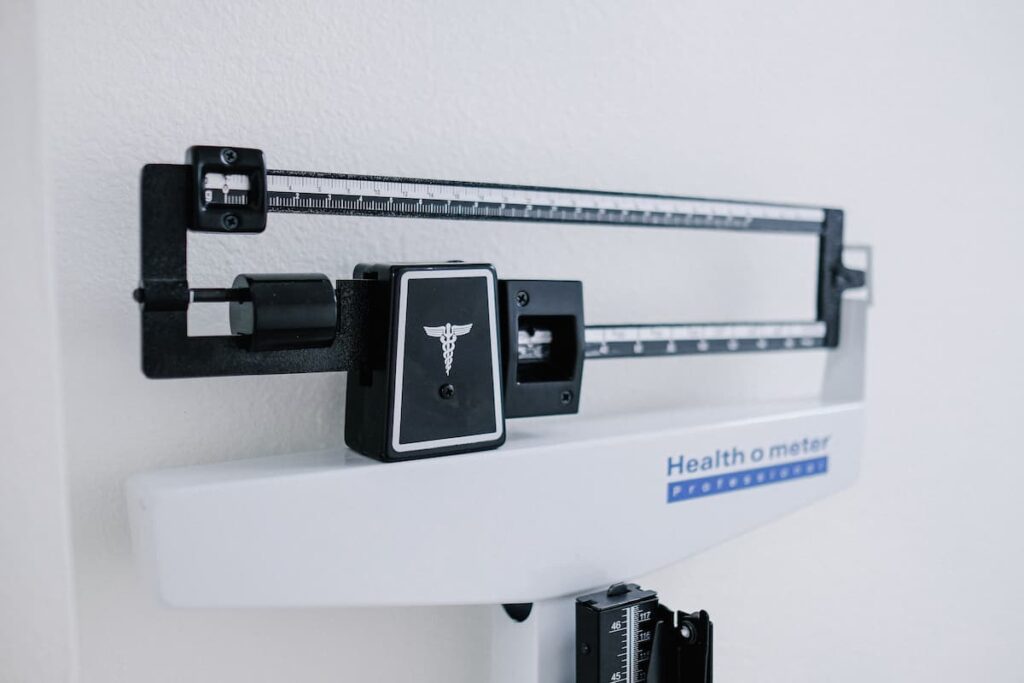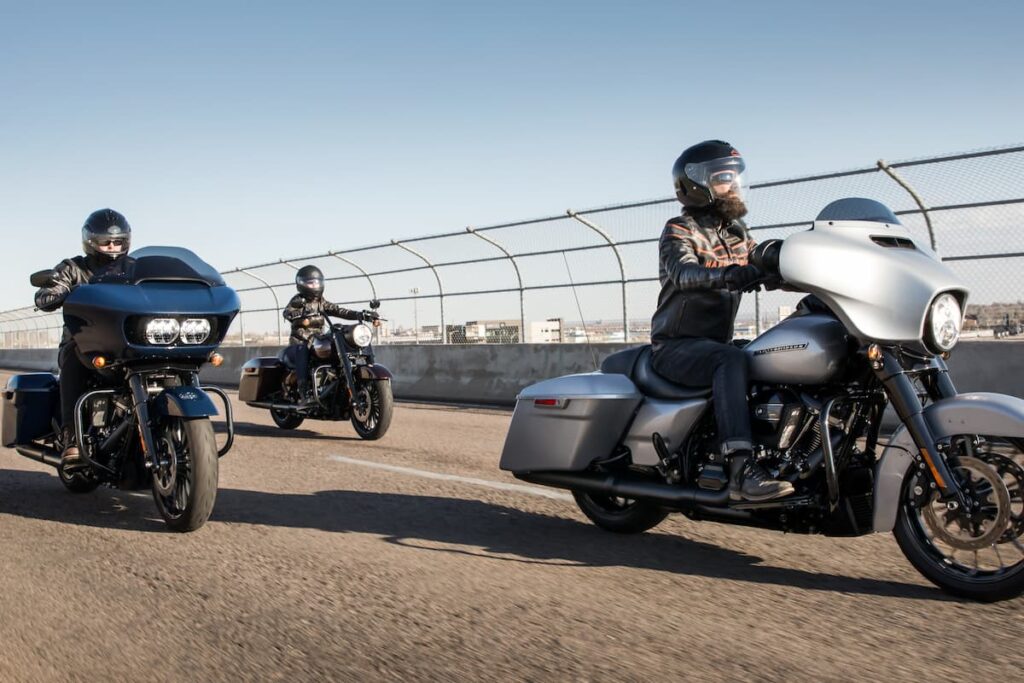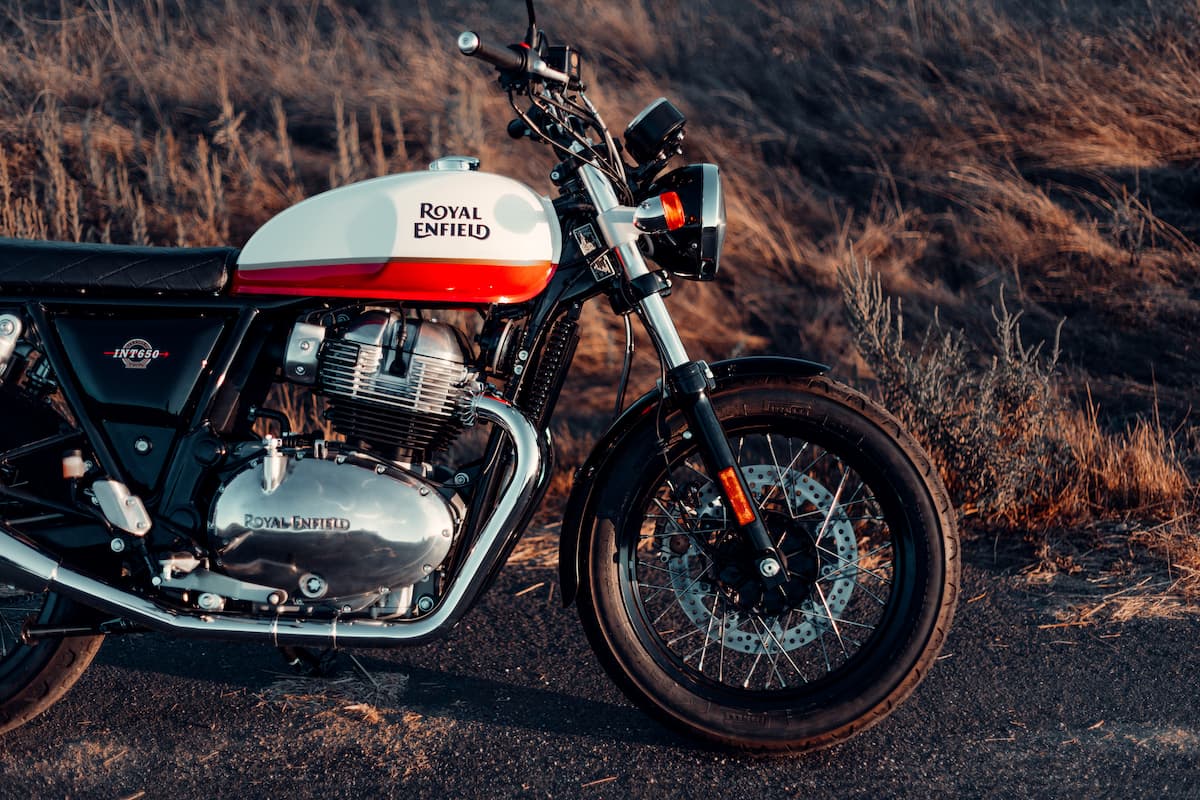How Much Does an Average Motorcycle Weigh? Motorcycles come in all shapes and sizes. Some are designed for speed, others for off-roading, and still others for cruising down the open road. But one thing all motorcycles have in common is weight. Just how much do motorcycles weigh?
The answer to that question depends on the type of motorcycle you’re talking about and how you define the bike’s weight.
Remember all the numbers listed below are just the average weight of a motorcycle in each category. The actual weight of any given motorcycle will depend on things like size and equipment. For example, a larger cruiser is going to weigh more than a smaller one. And a cruiser with lots of extra features is going to weigh more than a basic model.

Why Is Weight Important on a Motorcycle?
Motorcycles are uniquely vulnerable vehicles. Without the metal frame and cages that cars have, riders are completely exposed to the elements and to any collision. This makes weight an important factor in motorcycle design and construction.
A heavier bike will have more traction, making it less likely to slip or skid on wet roads. It will also handle better, providing a steadier ride at high speeds. When it comes to steering, a lighter motorcycle will be more responsive to input from the rider, making it easier to navigate tight turns and avoid obstacles. Of course, there are trade-offs to consider—a heavier bike may be more difficult to maneuver, and a lighter bike may be less stable on uneven terrain. But overall, weight is an important factor to consider when choosing a motorcycle.
Wet Weight vs Dry Weight
The dry weight of a motorcycle is the weight of the motorcycle without any fluids. This includes the gasoline, oil, and coolant. The dry weight is usually lighter than the wet weight. The dry weight is important when determining the power-to-weight ratio because it shows how much power the motorcycle has compared to its weight.
The wet weight is the weight of the motorcycle with all its fluids. This includes the dry weight plus the gasoline, oil, and coolant. The wet weight is important when determining the braking and suspension because it shows how much mass the motorcycle has to stop and turn.
Larger engines usually have a larger dry weight and wet weight. This is because they need more metal to contain the explosion and more oil to lubricate the engine parts. Larger engines generally come in tandem with a larger fuel tank. This again adds to a higher wet weight for the motorcycle.
Wet weight is always going to be greater than dry weight—usually by around 10%.
Adventure Bikes
Adventure motorcycles are designed to tackle a variety of terrain, from paved roads to off-road trails. As a result, they tend to be heavy machines, with a weight that can range anywhere from 350 to 600 pounds.
However, some manufacturers are now using lightweight materials in an effort to reduce the weight of their adventure bikes. This makes them easier to handle on long distances and helps to improve fuel economy. As a result, the weight of an adventure motorcycle is now an important factor to consider when making a purchase.
Cafe Racers
Cafe racer motorcycles are typically smaller and lighter than other types of bikes, which makes them more agile and easier to handle. They usually weigh between 400 and 600 pounds, although some models can be heavier or lighter than that.
The weight of a cafe racer motorcycle can vary depending on the materials used in its construction, as well as the size and type of engine. But overall, cafe racers are usually lighter than other types of motorcycles, making them ideal for racing or cruising around town.
Cruisers
Cruiser motorcycles are designed for long distances, and they are typically heavier than other types of motorcycle. This extra weight provides stability and comfort on long-haul trips, but it can also make the bike more difficult to maneuver at low speeds.
The average cruiser motorcycle can weigh between 700 and 1,000 pounds, although some models can weigh significantly more. For example, the Harley Davidson Ultra Limited weighs nearly 1,400 pounds.
Despite their size and being consider the heaviest bikes, cruiser motorcycles are very popular among riders who value comfort and stability on the open road.
Dirt Bikes
Most dirt bikes weigh between 250 and 400 pounds. However, there is a wide range of dirt bikes available on the market. You can get an off-road motorcycle that can weigh as little as 150 pounds.
The weight of a dirt bike is determined by a number of factors, including the type of materials used in construction and the size of the engine. Dirt bikes are typically made from lightweight materials such as aluminum or carbon fiber, which helps to keep the overall weight down.
In addition, dirt bikes usually have smaller engines than other types of motorcycles, which also contributes to their lighter weight. As a result, dirt bikes are often much easier to maneuver than other types of motorcycles, making them a popular choice for both racing and recreational riding.
Naked Bikes
Naked bikes are motorcycles that have had their fairings removed, resulting in a more basic and stripped-down appearance. These bikes are often favored by new riders because they are generally less expensive and easier to maintain than fully-faired sports bikes.
Naked bikes can vary widely in terms of weight, depending on factors such as engine size and frame material. However, on average, a naked motorcycle will generally weigh between 375 and 425 pounds. This makes them significantly lighter than fully-faired sports bikes, which can weigh up to 550 pounds or more. As a result, naked bikes tend to be more nimble and easier to handle, making them a great choice for beginner riders.
Sport Bikes
Sports bikes typically weighs between 400 and 600 pounds wet (with all fluids), and between 375 and 550 pounds dry. Different cc motorcycles will have a substantial difference on the weight, especially for sports bikes. The weight of a sports bike is especially important for several reasons.
Primarily, it affects the power-to-weight ratio, which is a key factor in performance. In the world of high-performance motorcycles, there is one key metric that is used to compare bikes: power-to-weight ratio. This refers to the amount of power that a bike has in relation to its weight.
The heavier a bike is, the more power it needs to produce in order to achieve the same performance levels. That’s why weight is such an important factor when it comes to sports bikes. A lighter bike will generally be able to outperform a heavier bike, all other things being equal.
That’s not to say that weight is the only thing that matters – there are many other factors that affect a motorcycle’s performance – but it is an important consideration. When shopping for a sports bike, be sure to pay attention to the power-to-weight ratio; it could make all the difference in how the bike performs on the road.
Second, it affects the handling of the bike, making it more or less nimble. And finally, it impacts fuel economy – the heavier the bike, the more fuel it will consume.
So, if you’re in the market for a sports bike, be sure to pay attention to not just the horsepower rating but also the wet or dry weight of the bike. Both are important factors in determining what kind of performance you can expect.
Touring Bikes
A Touring bike is designed for long-distance travel and typically weigh between 500 and 1,000 pounds. However, there is a wide range of touring bikes available, and the weight can vary depending on the purpose of the bike and the size of its engine.
For example, some touring bikes are designed for off-road travel and may be heavier than those that are primarily meant for use on paved roads.
Therefore, when choosing a touring motorcycle, it is important to consider the weight range that is best suited for your needs and type of riding.

What Other Factors Impact a Bikes Weight?
There are many things that can impact the average weight of a motorcycle, apart from its type and model.
For example, the materials that are used in its construction can have a significant effect. A motorcycle that is made with lighter materials such as aluminum or carbon fiber will generally weigh less than those made with heavier materials such as steel. This is one reason why new bikes will often be substantially faster than an old bike with the same size engine.
Additionally, the size of the engine can also be a factor. Generally speaking, larger engines will result in a heavier motorcycle. This is why sport bikes often have smaller engines while touring bikes usually have larger ones.
How Can I Make My Motorcycle Lighter?
Every year, motorcycle manufacturers release new bikes that are lighter and faster than the previous year’s models. However, if you’re not in the market for a new bike, there are still ways to reduce the weight of your motorcycle.
One of the simplest ways to do this is to remove any unnecessary items from your bike. If you never ride with a passenger, for example, you can remove the passenger seat and foot pegs. You can also ditch the kickstand if you’re confident in your ability to prop up your bike without it. Every pound that you can remove from your bike will make it that much easier to ride.
Another way to reduce weight is to swap out heavy parts for lighter alternatives. For instance, replacing your steel wheels with aluminum ones will save a significant amount of weight. The same goes for exhausts. You can save a lot of weight by swapping out your original exhaust for an aftermarket one. If you’re willing to spend a little more money, you can even upgrade to carbon fiber parts, which are even lighter than aluminum.
The addition of aftermarket accessories can have a huge impact on a motorcycle’s weight. Things like saddlebags, fairings, and windscreens can add a lot of weight to a bike, so be sure to take that into consideration when shopping for motorcycle accessories.
Of course, making your motorcycle lighter will inevitably make it less stable. So be sure to take things slow at first and get used to riding your new setup before pushing yourself too hard. But if you’re looking for ways to improve your bike’s performance, shedding some weight is a great place to start.
So, Is Lighter or Heavier Better?
Just as with any other vehicle, the weight of a motorcycle is an important consideration when purchasing. Unfortunately answering the question of how much does the average motorcycle weigh, is only part of the equation.
A heavy motorcycle is a motorcycle with a powerful engine and a large frame. Heavy motorcycles are built for long-distance touring and can weigh over 1,000 pounds. The heaviest motorcycle can weigh over 1,500 pounds. A larger cc engine generally means a heavy bike.
While heavy motorcycles may be difficult to maneuver, they offer a number of advantages. Heavy motorcycles have more power than lighter motorcycles, making them better suited for longer distance rides. They also have larger frames, which makes them more stable at high speeds. In addition, heavy motorcycles tend to have better suspension systems, which means they provide a smoother ride. For riders who are looking to cover large distances, heavy motorcycles offer the perfect solution.
One of the main benefits of having a lightweight motorcycle is that it’s easier to maneuver. This is especially advantageous when riding on tight roads or in city traffic. Having a motorcycle weigh less also means it’s easier to maneuver when parking.
Another benefit of lightweight motorcycles is that they generally have better fuel economy than heavier bikes. This is because there’s less weight to move, so the engine doesn’t have to work as hard. There are a variety of different models of lightweight motorcycles on the market, so there’s sure to be one that fits your needs.
Different motorcycles serve different purposes, and the weight of your motorcycles are just one factor to consider. Whether you’re looking for a lightweight bike for commuting or for weekend rides, there’s a model out there that’s perfect for you. Ultimately, it’s important to choose a motorcycle that fits your specific needs and riding style.
